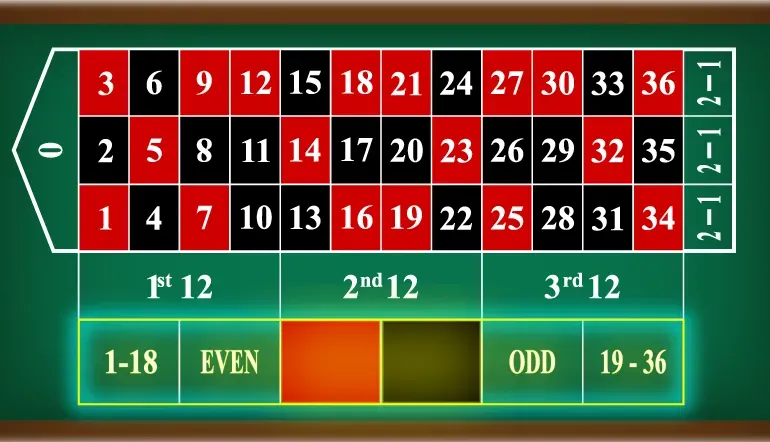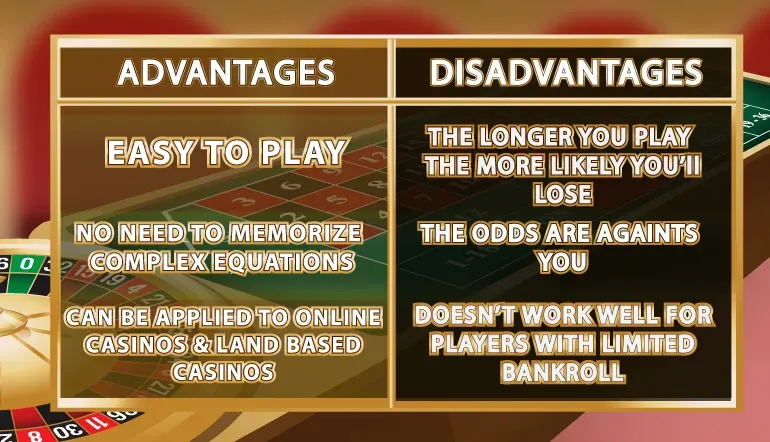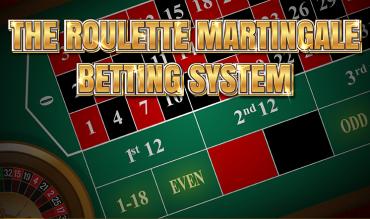The Martingale is a betting strategy that dates way back before Las Vegas and gambling was a twinkle in Benjamin “Bugsy” Siegel’s eyes. In fact, its first documented use was well before the 18th century. It is rumored to have been started by the greedy casino owner John Martindale.
As you may have guessed the name of the Martingale system is a variation on Mr. Martindale’s surname. It is worthwhile to note that Mr. Martingale did not use the system himself, but did strongly encourage its use among his casino patrons. He would often infer to his players that other players had consistently won large sums of money using the system and, because most successful gambling systems are contrary to basic reason, they would believe him.
Here we will discuss the ups and downs of the system and, in what specific situations it can work and why. We also define and evaluate the Anti-Martingale variation of the system.
HOW THE MARTINGALE BETTING SYSTEM WORKS?
The Martingale system is one of the most popular betting strategies implemented by recreational players. This is because it has a straight forward and seemingly rational approach. Players believe in the easier the better philosophy and it is definitely that. The player does not have to memorize any complex equations or quickly and mentally calculate wager amounts. The system can be easily applied to online casinos as well as in the traditional land-based establishments.

Over the years there have several of variations on the Martingale system. All of these variations orbit around the central idea of increasing or decreasing a bet after a loss. In most cases, the system is applied to games of chance that have a near 50/50 win to loss outcomes, such as the Roulette black and red bets or the pass and don’t pass lines at the craps tables. An uncommon but definitely applicable game that the Martingale system can be applied to is Baccarat.
The traditional Martingale system simply doubles the next bet after a loss is attained. When a win is achieved a new cycle begins. The strength of the system is that the player wins the highest bet of the cycle. Consider the following case:
If a player were to start with a $1 bet and, loses that bet, their next bet would be $2 dollars, and if the player loses that bet, their next bet would be $4. If that bet is won the cycle starts over and the player starts there bet at $1 again. This approach ensures that the player will win the largest bet of each betting cycle.
At first glance and to the mathematically ill trained, the Martingale system seems to be a winning approach to games with a coin flip outcome. The novice player sees this as a sure path to easy money. But like the perception of a parking space near the door at shopping mall on the busiest shopping day of the holiday season, the Martingale is too an illusion.
The system opens up the player to an unlikely but very high-risk approach and for a very slight reward. The Martingale system plays on the statistical probabilities of chance and lures the player into a false sense of security where the approach shows that the player has very high chance of winning several small amounts and has a very low chance of losing a very large sum of money.
Because the player is winning small amounts often, the player falls into the false perception that winning more often means winning more total dollars. This is not the case. And because most of the games that Martingale method applies to are subject to the mathematical law of trials; where this states that each event is independent of the last, there is no way for the player to feel secure in their play without some additional hedging which I’ll discuss shortly but first lets go over why it fails.

THE PROBLEMS WITH THE MARTINGALE SYSTEM
There are many problems with the Martingale system. The first concern the player needs to understand is that the longer the player plays the more likely they are to experience a bankrupting losing streak. Statistical Mathematics dictates that there is approximately a 0.001% chance of losing a 50/50 bet more than nine consecutive times.
This translates into 1 time in every 1,000 wager sequences. And because the player doubles their bet after every loss, the player loses more than1000 dollars for the 9 bet sequence. The total loss on a 1 dollar bet Martingale for a 9 bet sequence is $1059. This eliminates any gains the player would have achieved by the max bet of the cycle. In its simplest form, the betting strategy is exposing the player to exceptional losses on an average of 1 time in every 1,000 sequences.
The second and, third concerns that the player has to consider, is the constraints of the betting limits that are imposed by the casino and, the limited bankroll of the player. The betting limits of any casino ensure that the Martingale system will not be beneficial to the player. Most live roulette tables have an outside bet table max of $1000; and, after 9 bets the table max is reached. The player is prohibited by the rules of roulette from increasing their next bet.
Baccarat has some very large table limits and employing the Martingale method at these super high limits gets the player closer to an even game but ultimately a 15-20 loss streak will catch up with the player wiping out any gain achieved prior to the loss streak. But to even consider this approach an enormous bankroll has to be available for to the player.
In general cases, if a table max was reached the player, would have the option to move to a table with higher limits. The problem with this approach is that it is entirely possible that the player could continue loosing several more times.
And again after every loss the player has to double their bet. For the system to be plausible the player must possess an infinite bankroll, and the table limits must also be infinite. Both of these requirements are never the case and therefore the Martingale collapses under mathematical scrutiny.
THE ANTI-MARTINGALE SYSTEM
A popular variation of the Martingale system is the Anti-Martingale system. The premise here is to half the bet after every bet and double the bet after every win. This variation is betting on streaks but again over the long term, the player will see a steady decline of their bankroll.
Like the traditional Martingale system the law of independent trials causes this to fail. The player will eventually hit a streak where losses will eliminate all wins.
THE BEST MARTINGALE STRATEGY
In some casino games, particularly on roulette, players tend to use the Martingale Strategy. The method behind the martingale is one of the most daring gambling situations you could be involved in.
The thrill of losing it all or winning back your money (along with a small profit) has seized the emotions of casino goers for years.
Can the Martingale Strategy Be Used Effectively?
So, what is the martingale strategy, and can it be used effectively? Before I answer these questions, I’m going to begin this section with a fictional — but nonetheless — a very human example of getting too carried away.
In his short novel ‘The Gambler’ (first published in 1866), Russian writer Fyodor Dostoevsky introduces the wealthy, arrogant Grandmother character. Hearing a lot about casino gambling, she went to the casino in the hotel she was staying to investigate the game of roulette.
She plays roulette and wins twice betting green zero. She doubles up her money twice betting on red. However, when she later returns to the casino she gambles and loses all her winnings and a lot more of her own money.
Dostoevsky doesn’t describe the grandmother using the martingale strategy on roulette. But the character shows the types of emotions you need to avoid because of a losing streak.
But you may be wondering whether the grandmother might have stood a chance had she been using the martingale strategy.

What is the Martingale Strategy on Roulette Games?
What is martingale strategy on roulette games? The core idea forming the Martingale strategy on roulette games is to double your stake on an even-money wager every time you lose, until you win. If you win, the amount of net profit will be equal to your original stake.
Most people use the Martingale strategy on even-money chances like red or black, low or high as well as evens or odds. A winning payout is 1:1.
If you win and want to continue using the martingale strategy, you start all over again from your original starting stake.
Roulette Strategy Martingale Double Downs Explained
You double your starting stake in one or more even chance roulette games until you win the equivalent value of your starting stake. This means betting double the amount of your last stake.
It’s common to lose several games in a row before winning — unless of course the Martingale sequence wipes out your bankroll or you exceed the table limit.
The house edge on single zero roulette is 2.7% or 1.35% on single zero roulette using “le partage” rule. This rule means if you lose an even-money wager because of green zero, the dealer will only take half of your stake.
The following example shows the flow of a typical martingale strategy sequence:
- Bet £10 and win. The total return is £20 including £10 stake. (balance = +£10)
- In game 2, the starting stake is used again. £10. The player loses £10. (balance = £0 breakeven)
- Player makes his first double down wagering £20 to try and recover the £10 lost in game 2, and to win £10 which is equal to the starting stake. The bet loses. (balance = -£20)
- Player makes a second double down wagering £40 to try and recover the £30 lost in the two earlier games. The bet loses. (balance = -£60)
- Player makes a third double down wagering £80 to try and recover the £70 lost in the three earlier games. The bet wins. (balance = +£10) This winning bet won £80 thus recovering the £70 and producing a net profit of £10.
This looks great doesn’t it. As if there exists a perpetual money-making machine. You’d think people would be queuing for hours — if not days and nights waiting — to get into casinos to gamble. But the Martingale strategy isn’t the yellow brick road leading to a lifetime supply of—well, whatever your heart desires.
Pros & Cons of Using the Martingale Strategy on Even-Money Roulette Games
Assuming you have a large enough bankroll, you stand a reasonably good chance of winning using the martingale strategy, so long as you don’t fall victim to a long losing streak.
If you experience a long losing streak when using the Martingale strategy on roulette, you’ll reach a stage where the required stake exceeds the table bet size. This means you won’t be able to recover most of your losses, let alone only winning a small amount of money.
Example of a Martingale Strategy Exceeding Bet Size Limit on a Roulette Table
For instance, when using the martingale strategy on the outside even-money roulette wagers, let’s say a player’s starting stake is £10 and the table limit is £10,000.
In the following table, all martingale strategy bets lose
| Game 1: -£10 (total loss = £10) |
| Game 2: -£20 (£30 loss) |
|
Game 3: -£40 (£70 loss) |
| Game 4: £80 (£150 loss) |
|
Game 5: £160 (£310 loss) |
| Game 6: £320 (£630 loss) |
| Game 7: £640 (£1,270 loss) |
| Game 8: £1,280 (£2,550 loss) |
| Game 9: £2,560 (£5,110 loss) |
| Game 10: £5,120 (£10,230 loss) |
| Game 11: £10,240 (bet exceeds table limit) |
There are three points to bear in mind:
- Point One: The Martingale strategy risk far outweighs the reward. Consider game 10; Even if he had won, the stake is £5,120 to win a net profit of just £10. And £5,110 had already been lost by the earlier nine games.
- Point Two: At game 11, the bet size exceeds the £10,000 table limit. Assuming the player wagers this limit and wins, he would have recovered most of his losses, less £230. So, having staked £10,000 at game 11, using the Martingale strategy, the entire sum for all games that has been staked totals £20,230.
- Point Three: If the player stakes £10,000 on game number 11, and loses, but carries on staking £10,000, this scenario (and whatever hypothetical outcomes) is outside of the rules of the martingale strategy.
Can Skill Be Used With the Martingale Strategy on Roulette Games?
There’s no skill involved when most players use the Martingale strategy on roulette games. At best, when betting on roulette games using the Martingale strategy, players can:
- Apply bankroll stop loss rules to limit losses;
- Limit the number of double downs;
- Use a pattern selecting strategy to decide on what to bet.
To find out how you can tweak the martingale strategy so that the application is more fun and less risky, please read 888casino's Martingale strategy article.
Roulette Strategy Martingale Confusion
The problem with the Martingale strategy is the reality of logic. The strategy is a negative progression betting strategy.
The first stake on an outside, i.e., an even-money wager has, (because of the house edge) an almost 50:50 chance of winning. However, the second and later wagers take on the burden of the negative pressure in trying to win.
Because the reward is low compared to the potential catastrophic losses, and because long losing streaks are common, I wouldn’t recommend roulette strategy martingale when gambling real money.


